in the dark of the night, senso-ji continues to be illuminated with lights showing vivid reds and golds and white accents, very eye catching motifs of buddhist temples. senso-ji is the oldest temple in tokyo, located in the asakusa district of taito ward. i have briefly talked about this temple in my nightwalker series below:
| i have become a night walker: June 13 2024 |
senso-ji (浅草寺)
often called senso-ji temple, although that i think is a naming redundancy as "ji" (寺) already means temple in japanese, is an ancient temple. and when i say ancient i meant built in the year 645 ancient. but the history came way earlier at 628 according to a legend which says that two fisherman caught a statue in their nets one morning as they went fishing in the nearby sumida river. they then realized that it was a statue of Kannon, the bodhisattva of compassion. (in buddhism, a bodhisattva is a person who is on the path towards awakening or buddhahood.) the village chief then devoted his life to buddhism, and remade his house into a temple and housed the statue they found. check more of the history in their website here.
senso-ji is a wide temple complex with lots of important buildings and structures built over the times. most buildings where actually destroyed in several occasions and the whole complex suffered heavy destruction during the second world war. as i visited the place in one of my nightwalker series, there were a couple of closed areas. here are a few of those viewable structures even at night.
let me start of with hozomon, the inner of two entrance gates leading to the main hall. first built in 942, the current flame resistant building rebuilt in 1964 houses important temple and national treasures in the second floor. of course we are not allowed to even catch a glimpse of those, but we can see the two guardian nio statues on each side facing outwards, a 400 kg main lantern at the center with two lanterns beside each weighing approximately 1000 kg. on the other side facing the main hall are two large straw sandals which weighs 400 kg each. this is how strong this current building is.
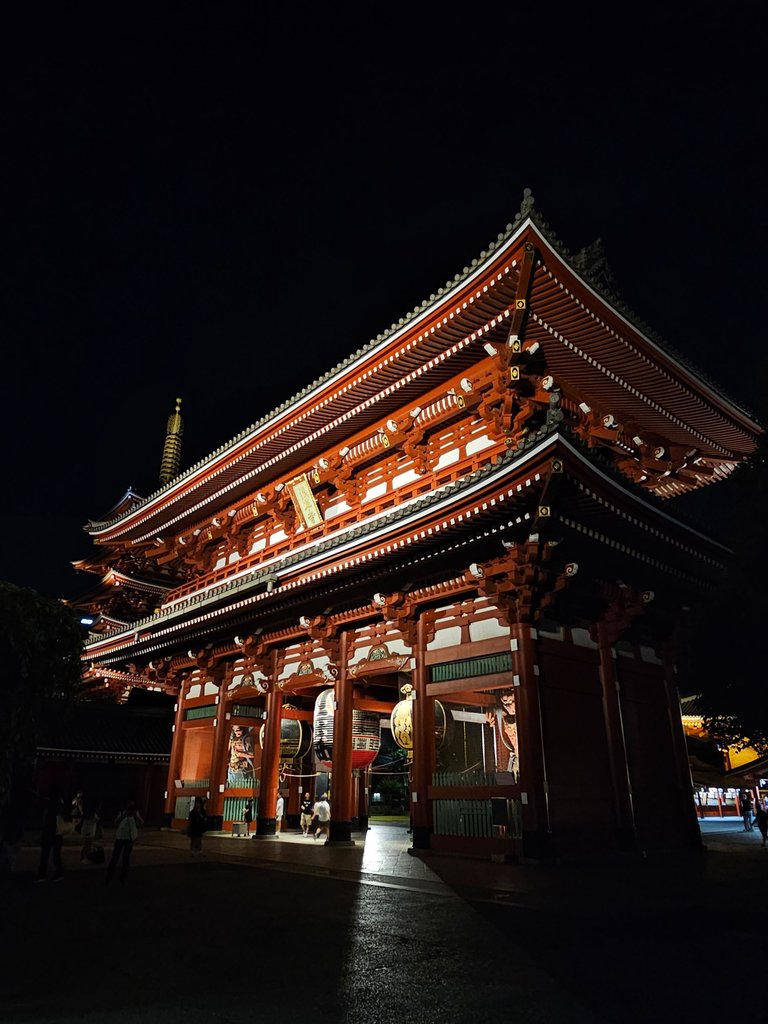

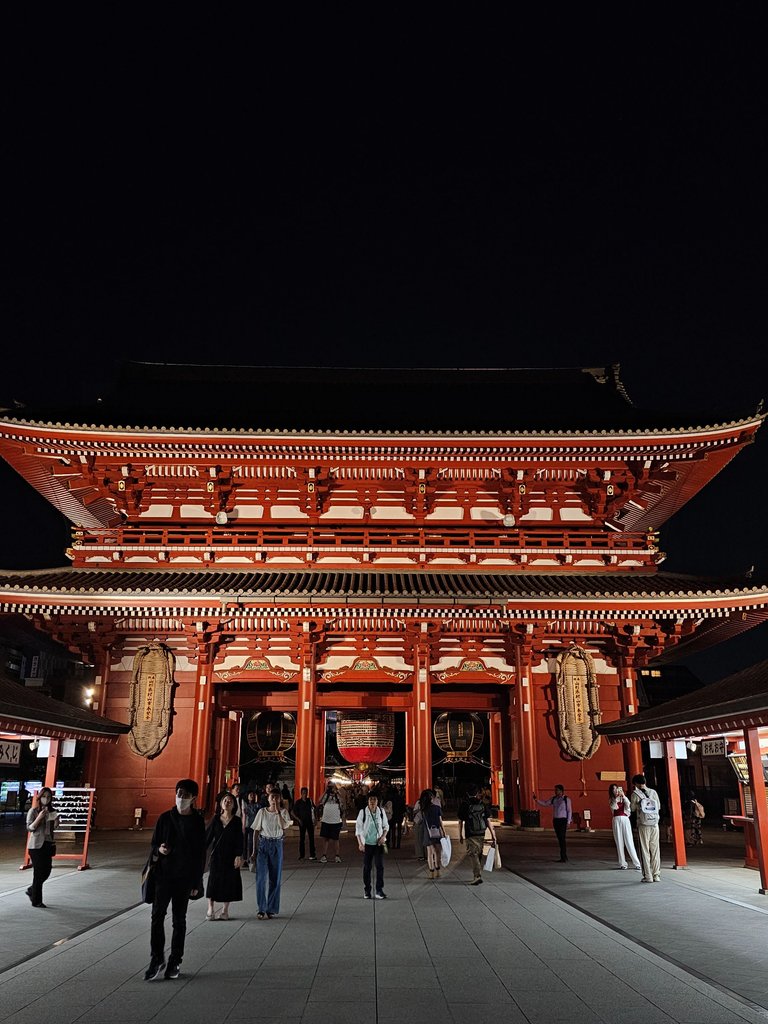
the main hall, otherwise called as kannon hall, enshrines the principal image of the temple, Bodhisattva Kannon. as with most of the structures in the temple complex, this too was destroyed in the seconds world war air raid, and was later rebuilt in 1958 from donations. the main hall was actually re-roofed with titanium tiles in 2010 making it lighter and more sturdy. in front is hanged a giant lantern weighing approximately 600 kg. the main hall is beautifully decorated with calligraphies and ceiling paintings which is sadly closed at the time i went. and at the very center is an "altar" or a "palace" which houses the original Kannon statue which was eternally locked from anyone's view.
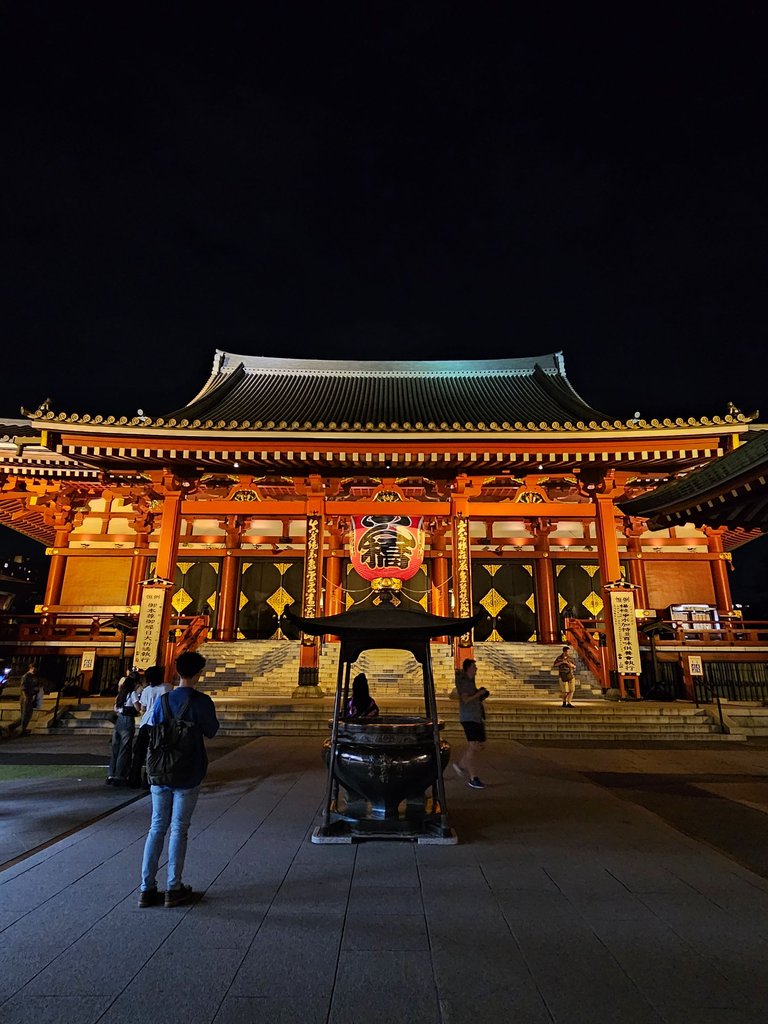
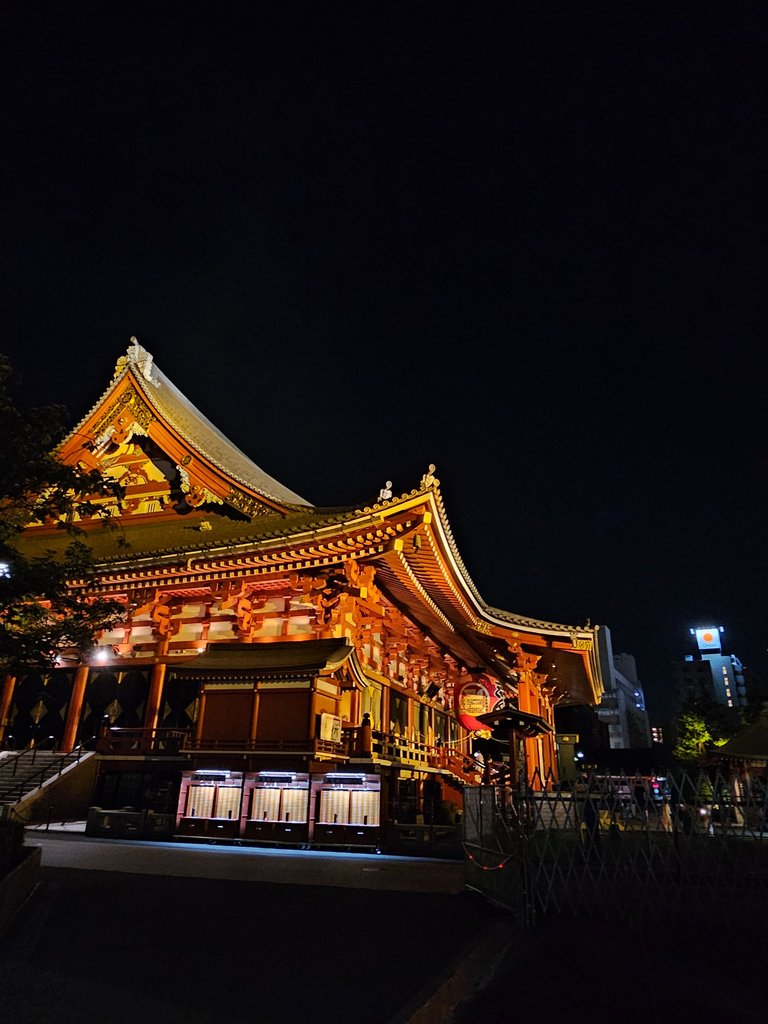
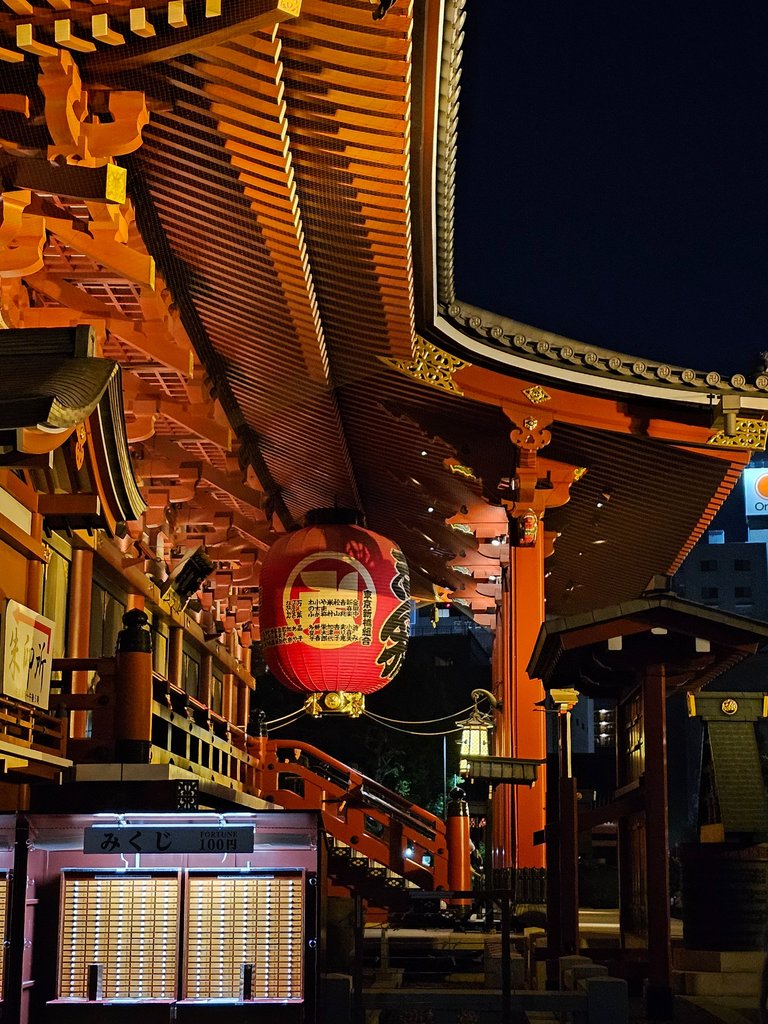
in every buddhist temple, one is required to purify before praying. and this purification is done in a water pavilion where water is continuously flowing for everyone to wash their hands and mouths. the water pavilion in senso-ji has an ink painting of a dragon at the ceiling carefully installed upon the structure's installation in 1964. the water basin currently has a statue of a dragon god on top which was originally placed at the fountain behind the main hall from 1903.
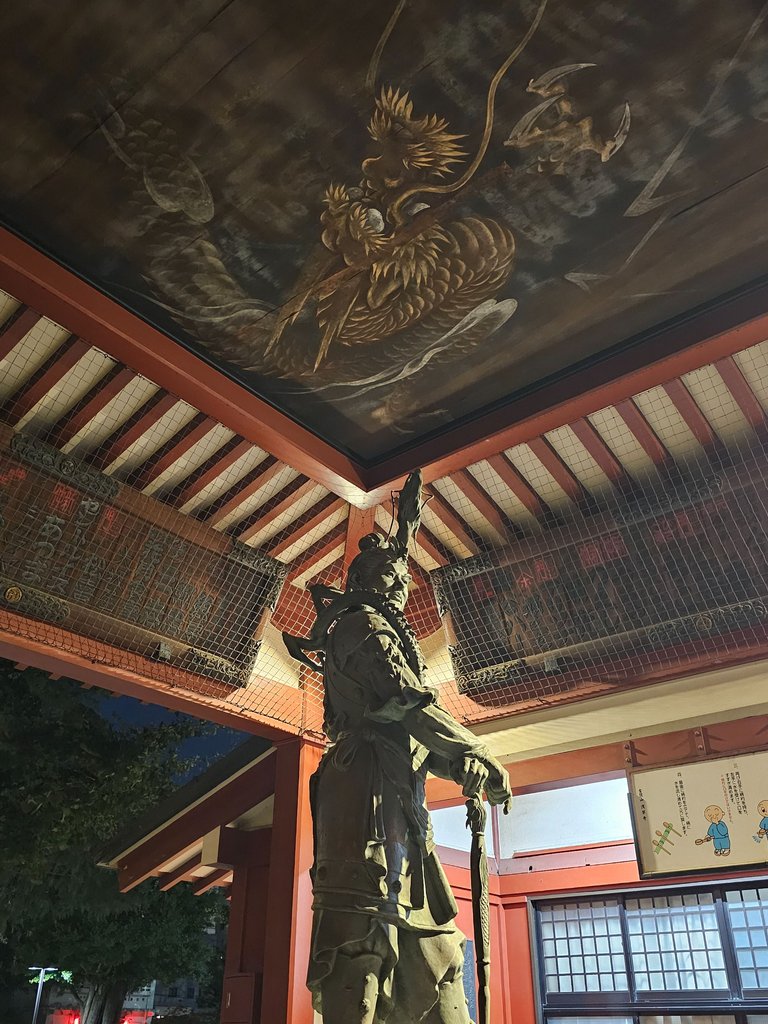
originally built in 942, this five-storied pagoda towers the night sky. located southwest of the main hall, the pagoda has suffered various destruction by fires, the last was during the war. the current one was rebuilt as a steel framed reinforced concrete building in 1973 at a little over 53 meters in height. on the fifth floor, it houses the sacred buddha relic which was officially brought over from sri lanka.
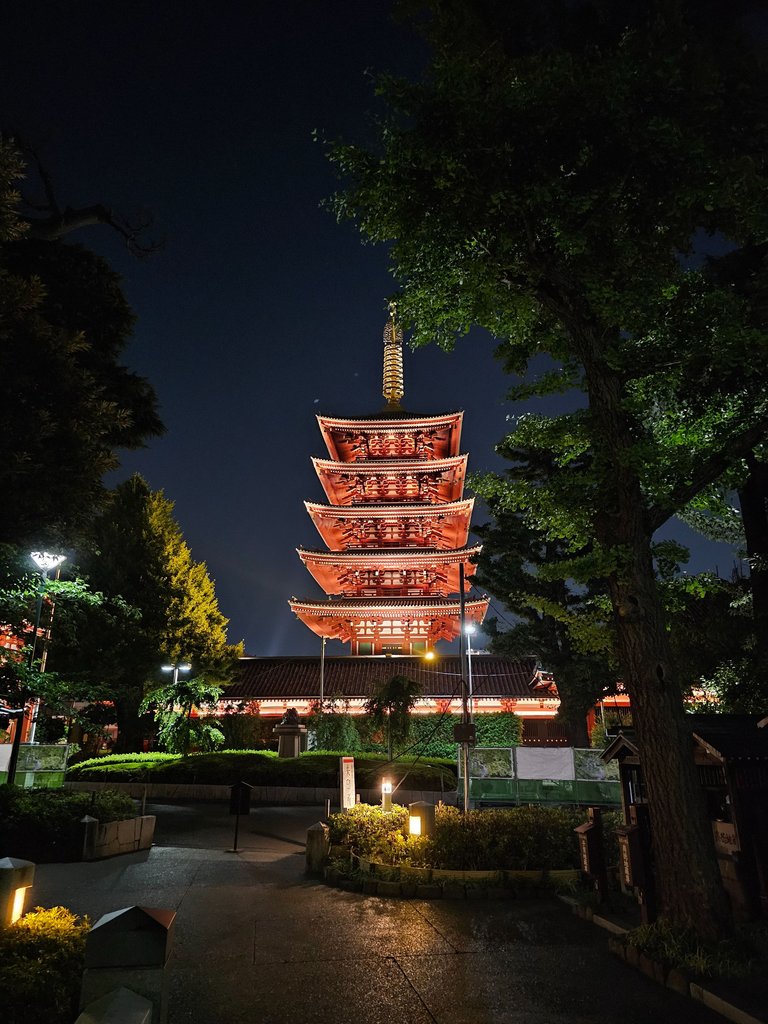


another tower is also clearly visible in the temple complex, the tokyo skytree, just located from across the river. just read my previous article regarding this tower from below to learn more.
| framed and famed tokyo skytree |
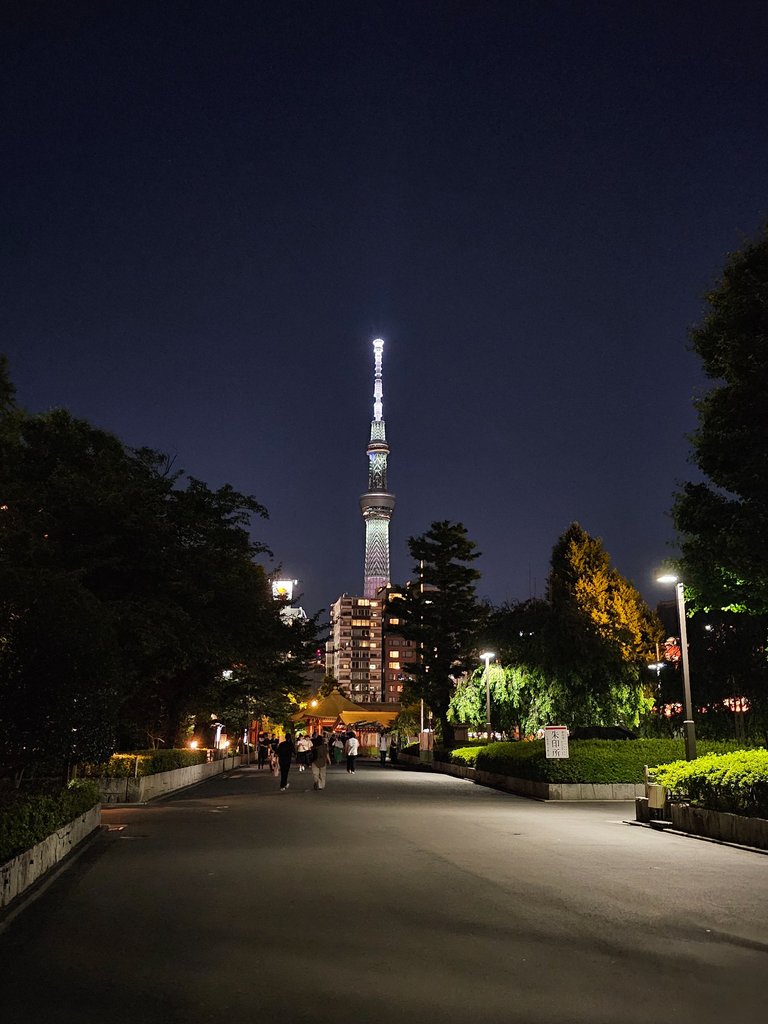
from the inner gate, a shopping street, the nakamise is one of the oldest in japan. varieties of shops lined the streets but as you can see, they are all closed by 8pm. this straight street leads to the last of the buildings i visited.
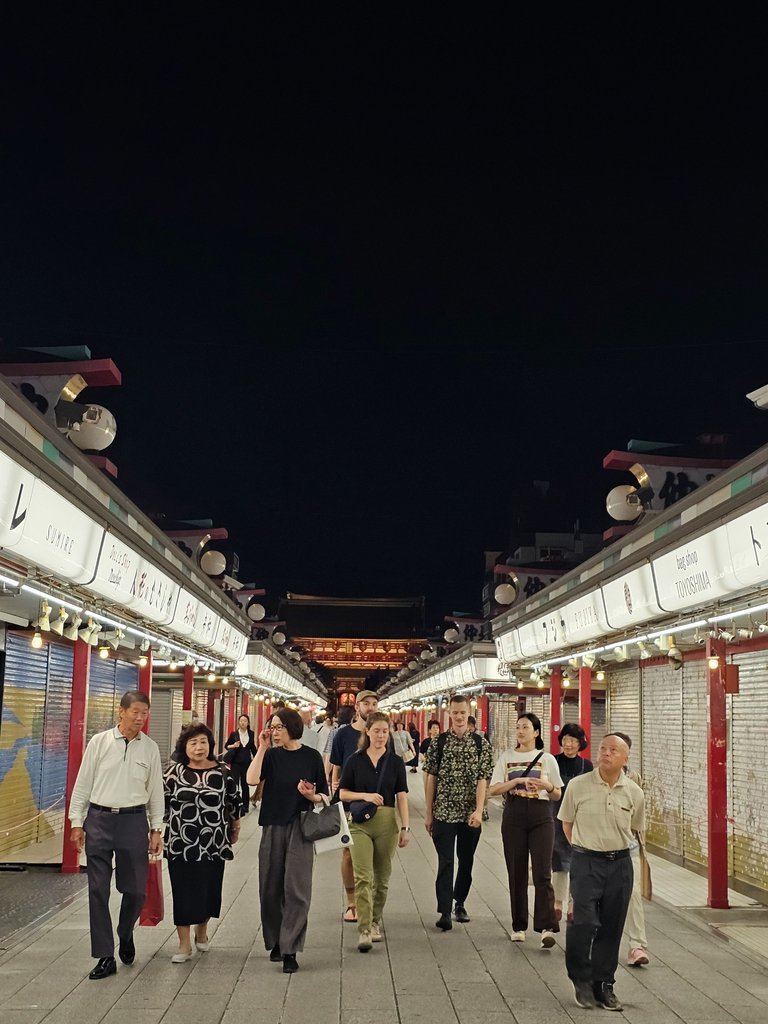
the outside of the two large gates, the kaminarimon or the thunder gate is the most popular with the tourists. this is the main gate seen from the streets and that giant red lantern is indeed eye catching. and that is heavy too at approximately 700 kg in weight. on both sides were statues of raijin (the god of thunder, which was sadly covered by the pillar) and fujin (the god of the wind). this area is always crowded even at night but it was first built in 942. it has always burned down over the years, the last of which was in 1865 from a massive fire in the neighboring district. the current structure has remained in place since 1960.
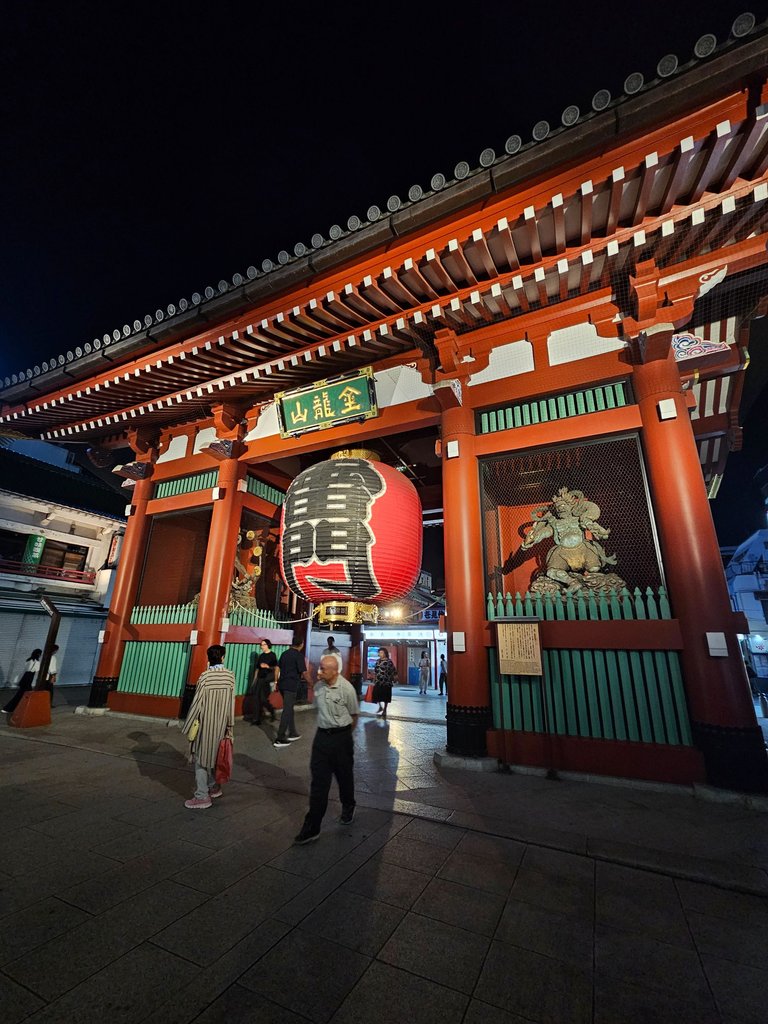
there are still many buildings inside the temple complex but most were close or not lighted at night making it hard to document by this nightwalker. i have tried to walk you through this historic area with as much care as possible but it is so much better to experience the site firsthand. most likely, you will be visiting in day light, this area will be bustling with people and colors and sounds by then which will be a totally different experience.
as always, AMPING KANUNAY!

all content is by yours truly unless otherwise specified
all photos are taken with a galaxy s23 ultra

